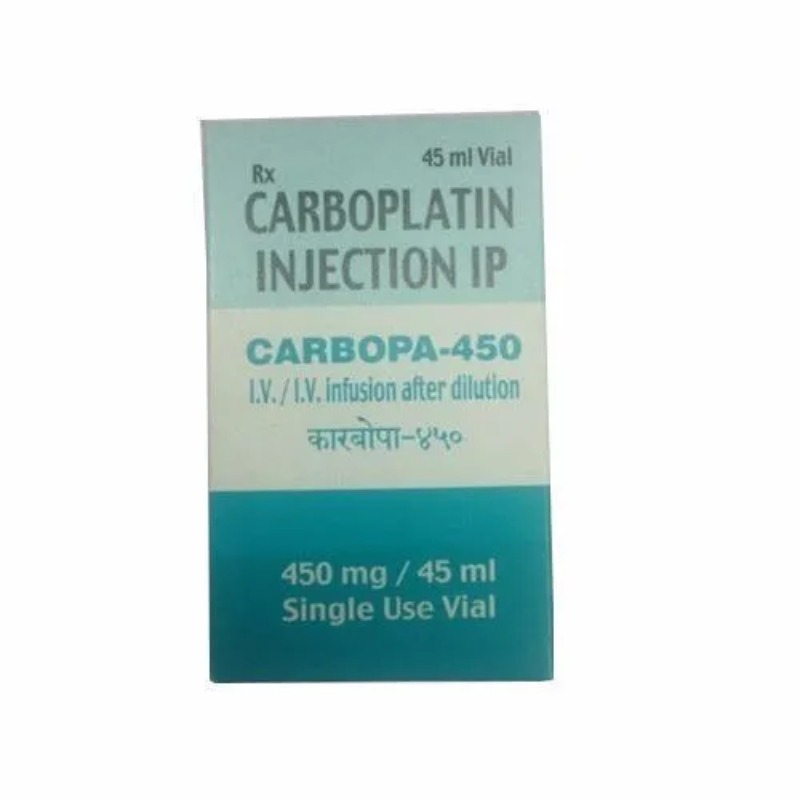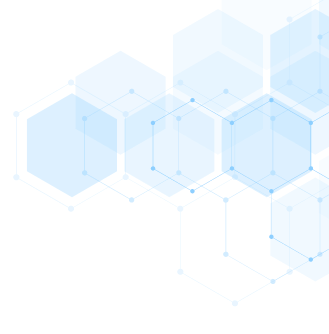DESCRIPTION
Carboplatin
Mechanism of Action
• Covalently binds to DNA with preferential binding to the N-7
position of guanine and adenine.
• Reacts with two different sites on DNA to produce cross-links, either
intrastrand (,90%) or interstrand (,5%). Formation of DNA
adducts results in inhibition of DNA synthesis and function as well
as inhibition of transcription.
• Binding to nuclear and cytoplasmic proteins may result in cytotoxic
effects.
• Cell cycle–nonspecific agent.
Mechanism of Resistance
• Reduced accumulation of carboplatin due to alterations in cellular
transport.
• Increased inactivation by thiol-containing proteins such as
glutathione and glutathione-related enzymes.
• Enhanced DNA repair enzyme activity (e.g., ERCC-1).
• Deficiency in mismatch repair (MMR) enzymes (e.g., hMLH1,
hMSH2).
Absorption
Not absorbed by the oral route.
Distribution
Widely distributed in body tissues. Crosses the blood-brain barrier and
enters the CSF. Does not bind to plasma proteins and has an apparent volume
of distribution of 16 L.
Metabolism
Carboplatin does not undergo significant metabolism. As observed with
cisplatin, carboplatin undergoes aquation reaction in the presence of low
concentrations of chloride. This reaction is 100-fold slower with carboplatin
when compared to cisplatin. Carboplatin is extensively cleared by the kidneys,
with about 60%–70% of drug excreted in urine within 24 hours. The
elimination of carboplatin is slower than that of cisplatin, with a terminal
half-life of 2–6 hours.
Indications
1. Ovarian cancer.
2. Germ cell tumors.
3. Head and neck cancer.
4. Small cell and non–small cell lung cancer.
5. Bladder cancer.
6. Relapsed and refractory acute leukemia.
7. Endometrial cancer.
Drug Interaction 1
Myelosuppressive agents—Increased risk of myelosuppression when
carboplatin is combined with other myelosuppressive drugs.
Drug Interaction 2
Paclitaxel—Carboplatin should be administered after paclitaxel when
carboplatin and paclitaxel are used in combination. This sequence prevents
delayed paclitaxel excretion, which results in increased paclitaxel drug levels
and potentially increased host toxicity.
Special Considerations
1. Use with caution in patients with abnormal renal function. Dose
reduction is required in the setting of renal dysfunction. Baseline
CrCl must be obtained. Renal status must be closely monitored
during therapy.
2. Although carboplatin is not as emetogenic as cisplatin, pretreatment
with antiemetic agents is strongly recommended.
3. Avoid needles or IV administration sets containing aluminum
because precipitation of drug may occur.
4. Contraindicated in patients with a history of severe allergic reactions
to cisplatin, other platinum compounds, or mannitol.
5. In contrast to cisplatin, IV hydration pretreatment and posttreatment
are not necessary. However, patients should still be
instructed to maintain adequate oral hydration.
6. Hemodialysis clears carboplatin at 25% of the rate of renal clearance.
Peritoneal dialysis is unable to remove carboplatin.
7. Risk of hypersensitivity reactions increases from 1% to 27% in
patients receiving more than seven courses of carboplatin-based
therapy. For such patients, a 0.02-mL intradermal injection of an
undiluted aliquot of their planned carboplatin dose can be administered
1 hour before each cycle of carboplatin. This skin test identifies
patients in whom carboplatin may be safely administered.
8. Pregnancy category D. Breastfeeding should be avoided.
Toxicity 1
Myelosuppression is significant and dose-limiting. Dose-dependent,
cumulative toxicity is more severe in elderly patients. Thrombocytopenia is
most commonly observed, with nadir by day 21.
Toxicity 2
Nausea and vomiting. Delayed nausea and vomiting can also occur, albeit
rarely. Significantly less emetogenic than cisplatin.
Toxicity 3
Renal toxicity. Significantly less common than with cisplatin and rarely
symptomatic.
Toxicity 4
Peripheral neuropathy is observed in less than 10% of patients. Patients
older than 65 years and/or previously treated with cisplatin may be at higher
risk for developing neurologic toxicity.
Toxicity 5
Mild and reversible elevation of liver enzymes, particularly alkaline phosphatase
and SGOT.
Toxicity 6
Allergic reaction. Can occur within a few minutes of starting therapy.
Presents mainly as skin rash, urticaria, and pruritus. Bronchospasm and
hypotension are uncommon.
Toxicity 7
Alopecia is uncommon.
SPECIFICATION


Login To Comment